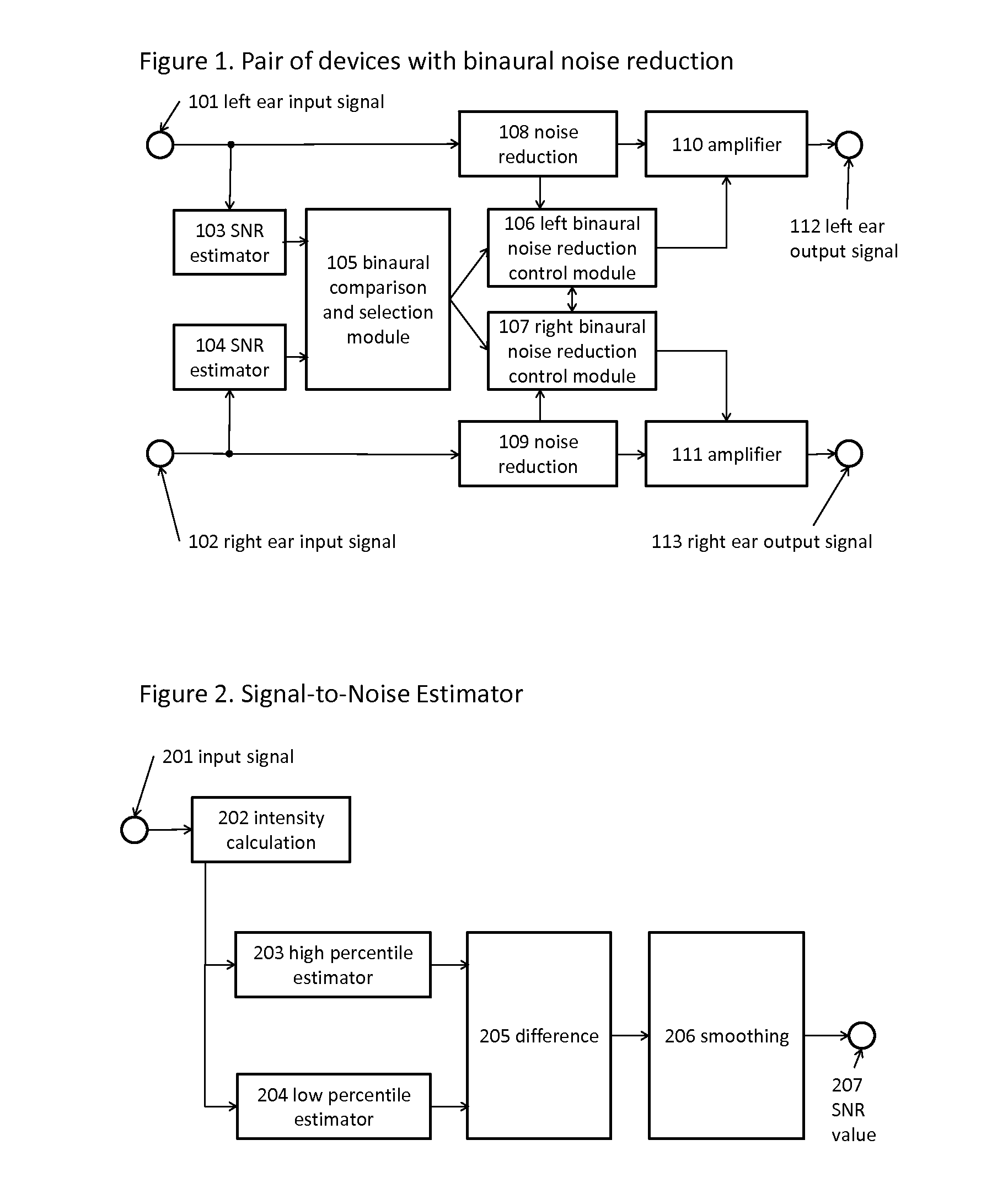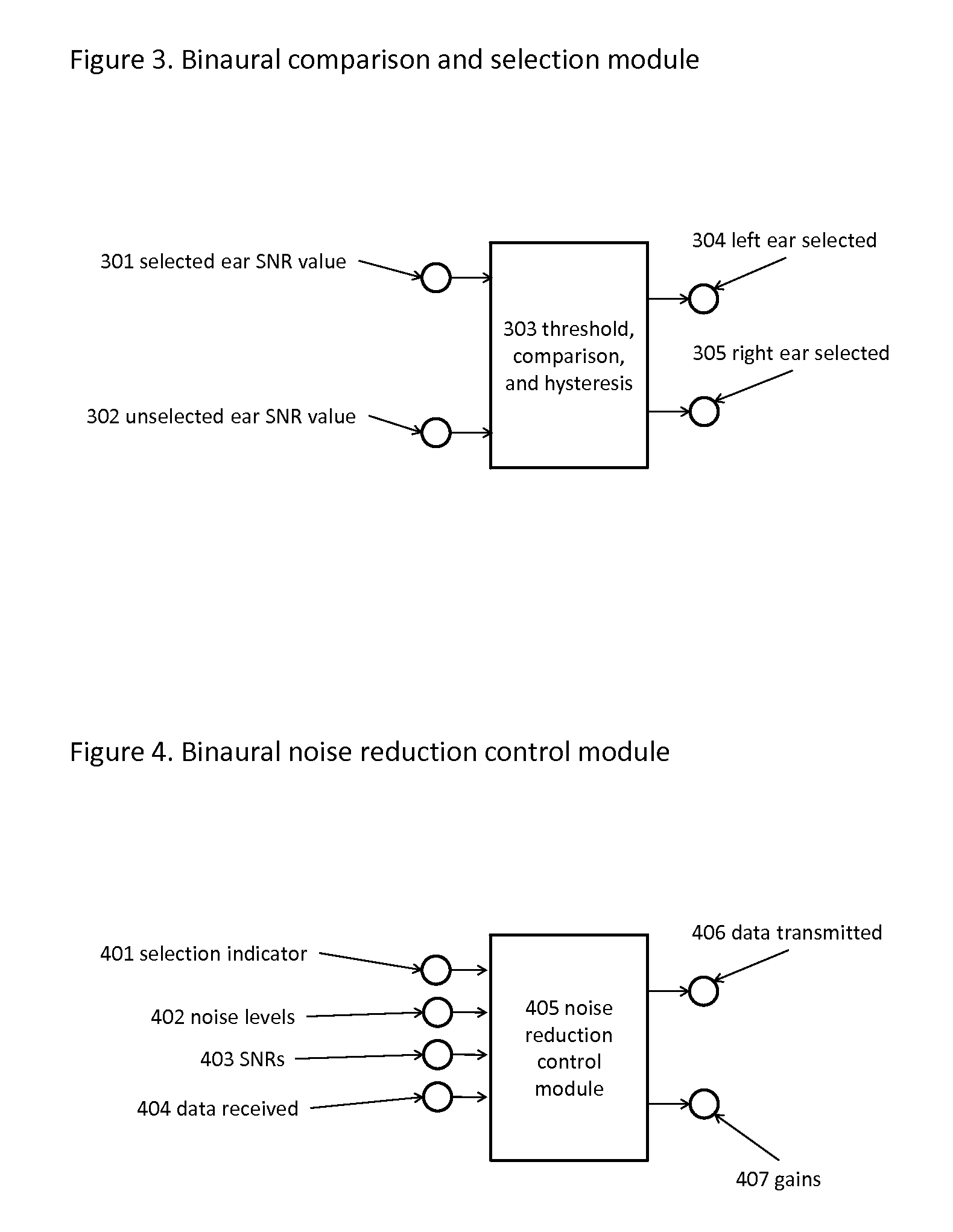Binaural noise reduction
a binaural noise and reduction technology, applied in the field of binaural noise reduction, can solve the problems of difficult prediction of the perceptual effects of introducing these artificial streaming cues, more controversy over the effects of spectral and temporal noise reduction on intelligibility and sound quality, and disrupt the internal binaural processes of most listeners, so as to save power
- Summary
- Abstract
- Description
- Claims
- Application Information
AI Technical Summary
Benefits of technology
Problems solved by technology
Method used
Image
Examples
second embodiment
[0050]In the invention, the gains or gain reductions for each frequency channel are calculated in the selected ear in the same manner as for a conventional monaural noise reduction scheme and transmitted from the selected ear to the unselected ear and applied simultaneously to the signal for each ear.
third embodiment
[0051]In the invention, the amplitude and dynamic range (or signal-to-noise ratio) for each frequency band are transmitted from the selected ear to the unselected ear and applied in identical noise reduction algorithms in both ears simultaneously.
[0052]The advantages of these embodiments of the present invention comprise: more accurate assessment of signal and noise levels in the unselected ear by utilizing information from the ear with the better SNR; avoidance of the creation of artificial streaming events that could disrupt the normal binaural processing of sounds; emphasize the signal relative to the noise in such a manner as to improve the signal-to-noise ratio in the unselected ear; minimizing the data transmission requirements and hence minimizing the additional power consumption of the devices; intelligently switching data transmission from one ear to the other to halve power consumption relative to a device that always transmits data in both directions; and intelligently sw...
PUM
 Login to View More
Login to View More Abstract
Description
Claims
Application Information
 Login to View More
Login to View More - R&D
- Intellectual Property
- Life Sciences
- Materials
- Tech Scout
- Unparalleled Data Quality
- Higher Quality Content
- 60% Fewer Hallucinations
Browse by: Latest US Patents, China's latest patents, Technical Efficacy Thesaurus, Application Domain, Technology Topic, Popular Technical Reports.
© 2025 PatSnap. All rights reserved.Legal|Privacy policy|Modern Slavery Act Transparency Statement|Sitemap|About US| Contact US: help@patsnap.com



